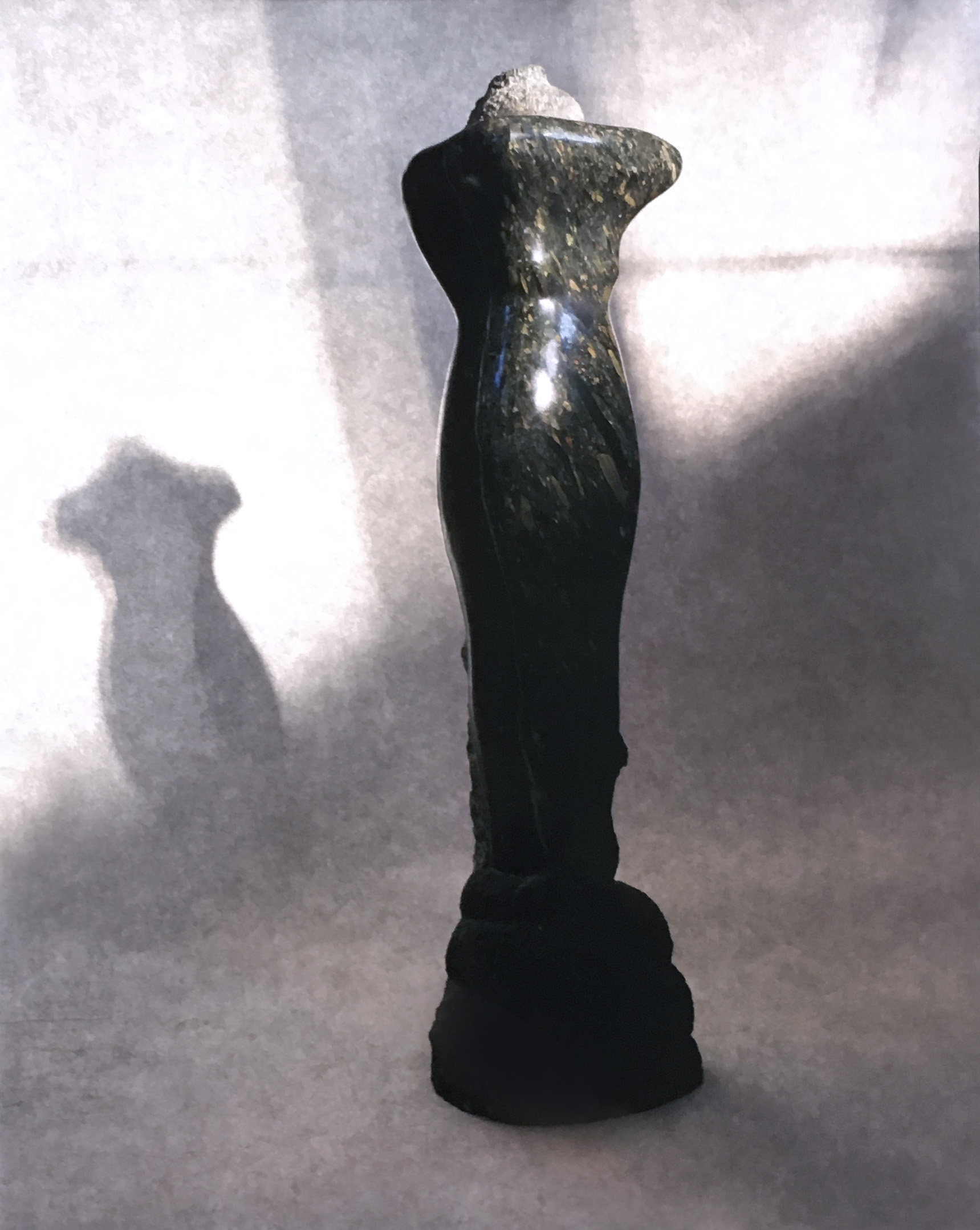Hammamat Breccia
St. Luke's Church, Chelsea
Hammamat Breccia
St. Luke's Church, Chelsea

Imperial porphyry
height: 25.00 cm, width: 38.00 cm, depth: 38.00 cm
The Government Art Collection, British Ambassadors Residence, Cairo

Egyptian Alabaster
This piece was shown as a part of an exhibition at Glyndebourne Opera house:
Collection of Egyptian alabaster bowls on an Egyptian alabaster support
These pieces were shown as part of an exhibition at Glyndebourne Opera house:
Bronze
28 x 37 x 16 cm
A Pair of Porphyry Bowls, 1999
Carved Egyptian porphyry
Height 9.5cm (3 3/4") Width 25cm (9 7/8") Depth 11.5cm (4 1/2")
Private Collection, USA, 2015
Interior Space, Ospedale di Santa Maria della Scala, 1999
Piazza del Duomo, Siena
Faceted Column, 1999
Finsbury Pavement
More works in London:
Interior Space: Shrine (a Porphyra), 2000
Imperial Portphyry and Bardiglio Imperiale
2330 x 4300 x 2000 mm
Commissioned by the National Gallery for the Millenium exhibition 'Encounters New Works from Old' 2000
Yoginis: Ox, Ram, Elephant, Horse, Hog, 2000 – 2004
Yoginis; Buffalo, Crocadile, Rabbit, Cobra, 2004 – 2010
Charnockite (basalt) each sculpture is approximately 200 cm x 55 cm x 40 cm
See all the works at this exhibition below:
This exhibition was held at Ludlow castle and featured large and small scale works that draw inspiration from a wide variety of concepts.
Interior Space: Terra degli Etruschi, Inscribed Pavement & Circular Altar, 1999-2002
Travertine Stone
250 x 292 x 172 cm
Interior Space: Terra Degli Etruschi was installed in the Baron’s Walk at Waddesden Manor in 2003. The sculpture was one in a number of sculptures made in 1999 for an exhibition entitled Interior Space in the Piazza del Duomo and Ospedale Santa Maria della Scala in Siena. The theme of the exhibition was to work with stone from throughout the area of the Etruscan civilization. It was seen as an ‘omage’ to their conception of the afterlife and preoccupation with necropolis and their furnishing. Stones included white Carrara marble, volcanic peperino and the Sienese travertine of which this sculpture is made from the quarries of Dei. Hence the title which translates as ‘The Earth of Gods’
This stone has been formed in historical rather than geological time as scattered upon its capping stone are fragment of terra cotta from Etruscan pots that have become embedded in the developing stone itself. Perhaps even the flora growing from it are too from seeds of ancient days.
Subsequent commissions for the Inscribed Pavement and the Altar were made with Massive slabs and blocks from the Quarries of Dei.
By way of the provenance, the sculpture was exhibited in the the ancient alpine Roman city of Aosta with the other Interior Space pieces from the Siena exhibition, in sites around the city and at the main Museum in the town. The exhibition was curated by Luigi di Corato and represented as the work of a Grand Tour entitled Fasti (a Roman calendar or register of events) was paired with an exhibition of J.M.W.Turner’s paintings of the ValD’Aosta at the Museum.
Lugged Bowl, 2002
Carved Ancient Egyptian pegmatite
Height 9cm (3 1/2") Diameter 15.5cm (6 1/8")
Private Collection, USA, 2015
Egyptian Alabaster Bowl, 2002
Carved Egyptian alabaster with gold details
Height 8cm (3 1/8") Diameter 12cm (4 3/4")
This piece is currently being shown with Adrian Sassoon, London
Charnokite Bowl, 2002
Carved Indian basalt
Height 12.5cm (4 7/8") Width 15.5cm (6 1/8") Depth 13.5cm (5 5/16")
Dreadnought: Problems of History, the Search for the Hidden Stone, 2003 - ongoing
Brecciated Imperial porphyry, 1 m x 2.7 m x 0.85 m
Installation photo at Chatsworth House
Installation photos in Bristol
Imperial Porphyry

Carved Egyptian porphyry
Height 9cm (3 1/2")
Width 30cm (11 3/4")
Depth 16cm (6 1/4")
This work is currently being shown by Adrian Sassoon, London.
This wonderful stone has a special place in my work since being given permission to extract stone from the Imperial quarries in Egypt nearly 30 years ago to make sculpture for the new Opera House in Cairo. With its transition from Roman Imperial exclusive use to its use after Constantine in Christian contexts, its symbolism is assured.
Roman Bowl, 2003
Carved Egyptian diorite
Height 8.5cm (3 3/8") Diameter 15cm (5 7/8")